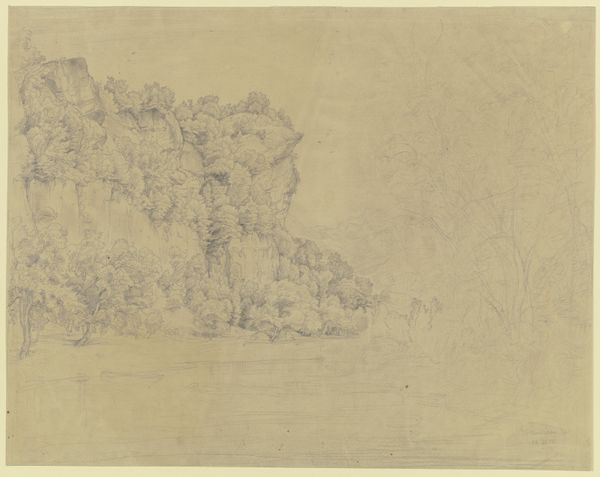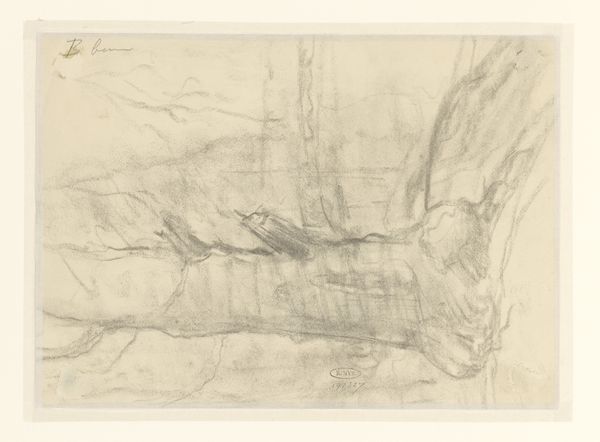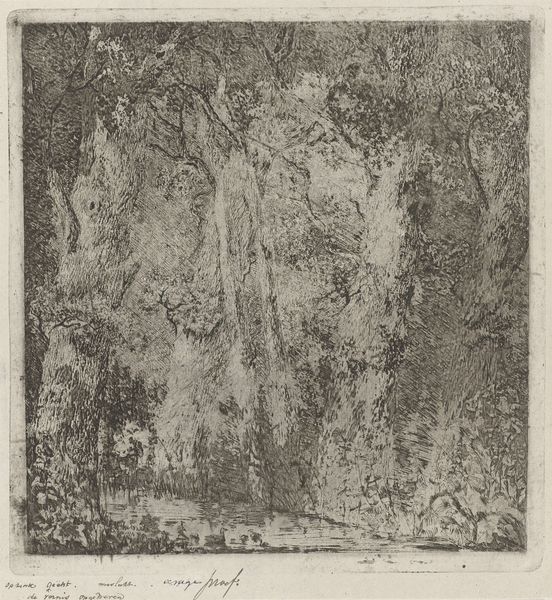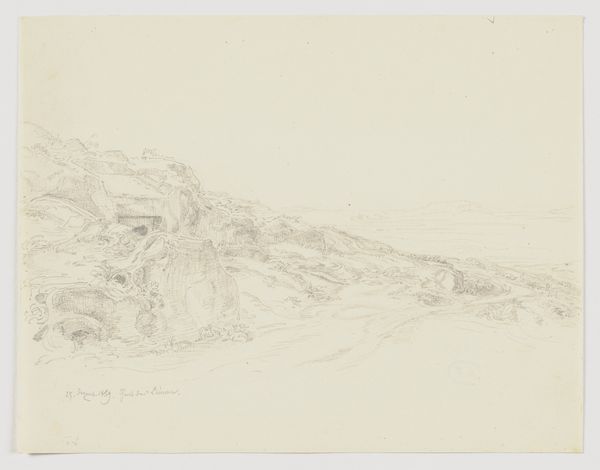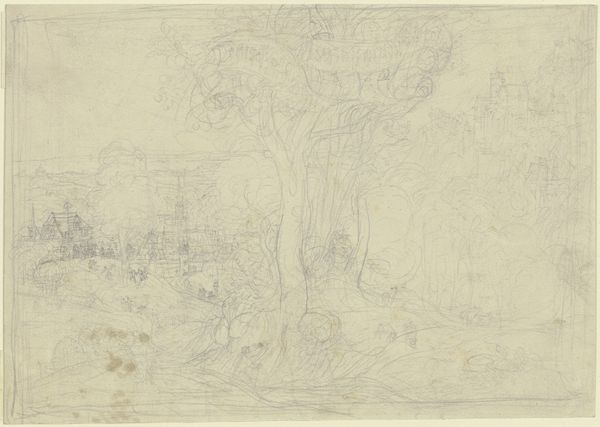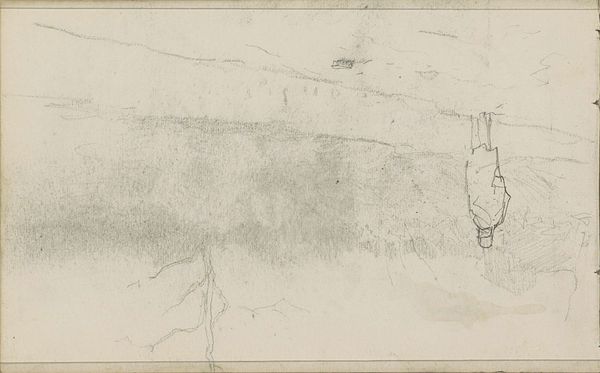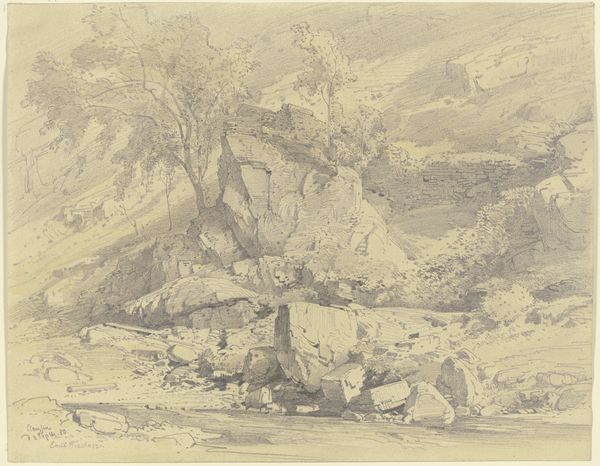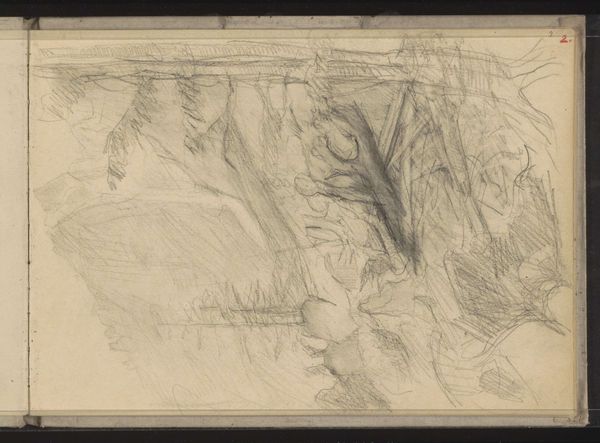
Copyright: Public Domain
Editor: This drawing, "Design for a Stage Set," is attributed to Eugène Cicéri and dates roughly from 1830 to 1890. It's pencil on paper, currently residing at the Met. The first thing that strikes me is the detail in the foliage. How would you interpret this work? Curator: I'm drawn to consider this drawing, first and foremost, as a commodity within the burgeoning 19th-century theater industry. It's not simply a landscape; it's a design. Who was Cicéri selling this design to? What kind of labor would then have been required to execute it at scale, building this illusionistic set? Editor: So you see it less as art and more as a blueprint for a larger, collaborative effort. Curator: Precisely. Think about the social context: theater as a popular form of entertainment, demanding spectacle. The materials of the final stage set - the paints, the canvas, the wood, the ropes - they all speak to the material conditions of production and the audience's desire for believable artifice. How does this perspective shape how you perceive the final spectacle? Editor: That's a different way to look at it, considering not just the image but the means required to bring it to life and how labor impacted artistic expression! So, it’s not just the finished product, but the whole system that created the stage. Curator: Exactly! Editor: Thinking about the social background adds a whole new layer to understanding art production of any era!
Comments
No comments
Be the first to comment and join the conversation on the ultimate creative platform.
